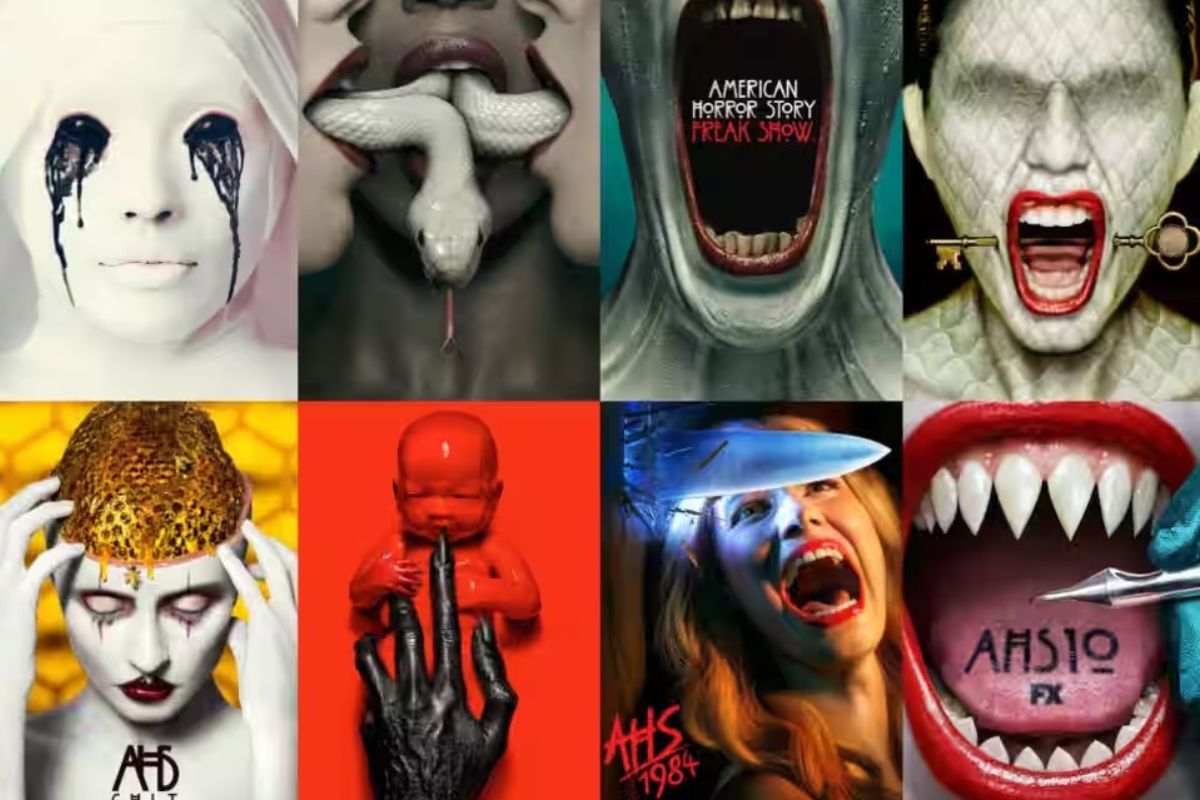
Why do horror stories captivate us? They tap into our deepest fears, making our hearts race and our minds whirl. From ancient folklore to modern thrillers, these tales have always held a special place in human culture. Horror stories offer a safe way to explore the unknown, confront our anxieties, and even find a sense of relief. Whether it's a ghostly apparition, a monstrous creature, or a psychological thriller, the genre keeps evolving, yet the core remains the same: to scare and intrigue. Ready to dive into the world of chills and thrills? Let's uncover 35 spine-tingling facts about horror stories that will keep you on the edge of your seat!
Key Takeaways:
- Horror stories have a rich history, from ancient Egypt to modern VR games. They explore primal fears and cultural differences, evolving with technology and society.
- Famous authors like Mary Shelley and Stephen King have left a lasting impact on horror literature, inspiring new generations of writers and filmmakers worldwide.
The Origins of Horror Stories
Horror stories have fascinated people for centuries. They tap into primal fears and explore the unknown. Here are some intriguing facts about the origins of these spine-chilling tales.
- The first known horror story dates back to ancient Egypt. The "Tale of Two Brothers" involves betrayal, murder, and supernatural elements.
- Gothic literature, which emerged in the 18th century, is considered the precursor to modern horror. "The Castle of Otranto" by Horace Walpole is often cited as the first Gothic novel.
- Mary Shelley's "Frankenstein," published in 1818, is one of the earliest examples of science fiction horror. It explores themes of creation, responsibility, and the monstrous.
- Edgar Allan Poe, often called the master of macabre, revolutionized horror literature in the 19th century with works like "The Tell-Tale Heart" and "The Fall of the House of Usher."
- The term "horror" in literature was first used in the 18th century to describe works that aimed to evoke fear and dread.
Famous Horror Stories and Their Impact
Certain horror stories have left an indelible mark on literature and popular culture. These tales continue to haunt readers and inspire new generations of writers.
- Bram Stoker's "Dracula," published in 1897, popularized the vampire genre and introduced the iconic character Count Dracula.
- H.P. Lovecraft's Cthulhu Mythos has influenced countless horror writers and filmmakers. His stories delve into cosmic horror and the insignificance of humanity.
- Stephen King's "The Shining" is a modern horror classic. The story of a haunted hotel and a family's descent into madness has been adapted into a successful film and miniseries.
- "The Exorcist" by William Peter Blatty, published in 1971, is based on a real-life exorcism. The novel and its film adaptation have become cultural touchstones.
- Shirley Jackson's "The Haunting of Hill House" is considered one of the best ghost stories ever written. It explores themes of isolation, mental illness, and the supernatural.
Horror Stories in Different Cultures
Horror is a universal genre, but different cultures have their own unique takes on what scares them. Here are some fascinating facts about horror stories from around the world.
- Japanese horror, known as J-horror, often features vengeful spirits and psychological terror. "The Ring" and "Ju-on: The Grudge" are prime examples.
- In Mexican folklore, La Llorona is a ghostly figure who mourns her drowned children. Her story has been adapted into numerous films and books.
- African horror stories often involve witchcraft, curses, and ancestral spirits. The genre is gaining popularity with authors like Nnedi Okorafor and Tade Thompson.
- Indian horror films, known as Bollywood horror, blend traditional folklore with modern scares. "Raat" and "Tumbbad" are notable examples.
- Russian horror literature often explores themes of existential dread and the supernatural. Nikolai Gogol's "Viy" is a classic tale of a witch and a young priest.
Psychological Horror
Psychological horror delves into the human mind, exploring fears, anxieties, and the darker aspects of human nature. These stories often blur the line between reality and madness.
- "Psycho" by Robert Bloch, inspired by real-life murderer Ed Gein, explores themes of identity and insanity. Alfred Hitchcock's film adaptation is a classic.
- "American Psycho" by Bret Easton Ellis is a disturbing exploration of a wealthy, psychopathic killer. The novel critiques consumerism and superficiality.
- "The Silence of the Lambs" by Thomas Harris features the iconic character Hannibal Lecter, a brilliant but terrifying cannibalistic psychiatrist.
- Shirley Jackson's "We Have Always Lived in the Castle" is a chilling tale of isolation, family secrets, and paranoia.
- "Bird Box" by Josh Malerman explores a world where unseen entities drive people to madness and suicide. The novel was adapted into a popular Netflix film.
Horror in Film and Television
Horror stories have found a natural home in film and television, where visual and auditory elements can amplify the fear factor. Here are some key facts about horror in these mediums.
- The first horror film, "Le Manoir du Diable," was made in 1896 by Georges Méliès. It features bats, devils, and skeletons.
- "Nosferatu," a 1922 silent film by F.W. Murnau, is an unauthorized adaptation of Bram Stoker's "Dracula." It remains a classic of early horror cinema.
- Alfred Hitchcock's "Psycho," released in 1960, is considered one of the greatest horror films of all time. Its shower scene is iconic.
- "The Texas Chain Saw Massacre," directed by Tobe Hooper in 1974, introduced the world to the terrifying character Leatherface.
- "Stranger Things," a Netflix series, blends horror, science fiction, and 1980s nostalgia. It has become a cultural phenomenon.
Modern Horror Literature
Modern horror literature continues to evolve, exploring new themes and pushing boundaries. These contemporary works have made significant contributions to the genre.
- "The Road" by Cormac McCarthy is a post-apocalyptic horror novel that explores themes of survival, morality, and the human condition.
- "World War Z" by Max Brooks is an oral history of a global zombie apocalypse. The novel was adapted into a successful film.
- "The Girl with All the Gifts" by M.R. Carey offers a fresh take on the zombie genre, focusing on a young girl who may hold the key to humanity's survival.
- "Mexican Gothic" by Silvia Moreno-Garcia is a gothic horror novel set in 1950s Mexico. It explores themes of colonialism, eugenics, and family secrets.
- "The Cabin at the End of the World" by Paul Tremblay is a psychological horror novel that questions reality and explores themes of faith, sacrifice, and survival.
The Future of Horror
As technology and society evolve, so does horror. The future of the genre promises new scares and innovative storytelling techniques.
- Virtual reality (VR) horror games offer immersive experiences that can be more terrifying than traditional media. Titles like "Resident Evil 7: Biohazard" are leading the way.
- Augmented reality (AR) horror experiences, like "The Walking Dead: Our World," blend the real world with digital scares.
- Interactive horror stories, such as those found on platforms like Wattpad and Episode, allow readers to influence the plot and outcomes.
- Podcasts like "The NoSleep Podcast" and "Lore" are bringing horror stories to new audiences through audio storytelling.
- Social media platforms like Twitter and Reddit have become breeding grounds for viral horror stories, such as the "Dear David" thread and "The Russian Sleep Experiment."
Final Chilling Thoughts
Horror stories have a unique way of gripping our imaginations and keeping us on the edge of our seats. From ancient folklore to modern-day thrillers, these tales tap into our deepest fears and curiosities. Whether it's the eerie settings, the unpredictable twists, or the spine-tingling characters, horror stories offer a thrilling escape from reality. They remind us of the unknown lurking in the shadows and the courage it takes to face our fears. So next time you pick up a horror book or watch a scary movie, remember the rich history and the fascinating facts behind these chilling tales. Embrace the fear, enjoy the thrill, and let your imagination run wild. Horror stories are more than just entertainment; they're a testament to the power of storytelling and the human psyche's fascination with the macabre.
Frequently Asked Questions
Was this page helpful?
Our commitment to delivering trustworthy and engaging content is at the heart of what we do. Each fact on our site is contributed by real users like you, bringing a wealth of diverse insights and information. To ensure the highest standards of accuracy and reliability, our dedicated editors meticulously review each submission. This process guarantees that the facts we share are not only fascinating but also credible. Trust in our commitment to quality and authenticity as you explore and learn with us.


